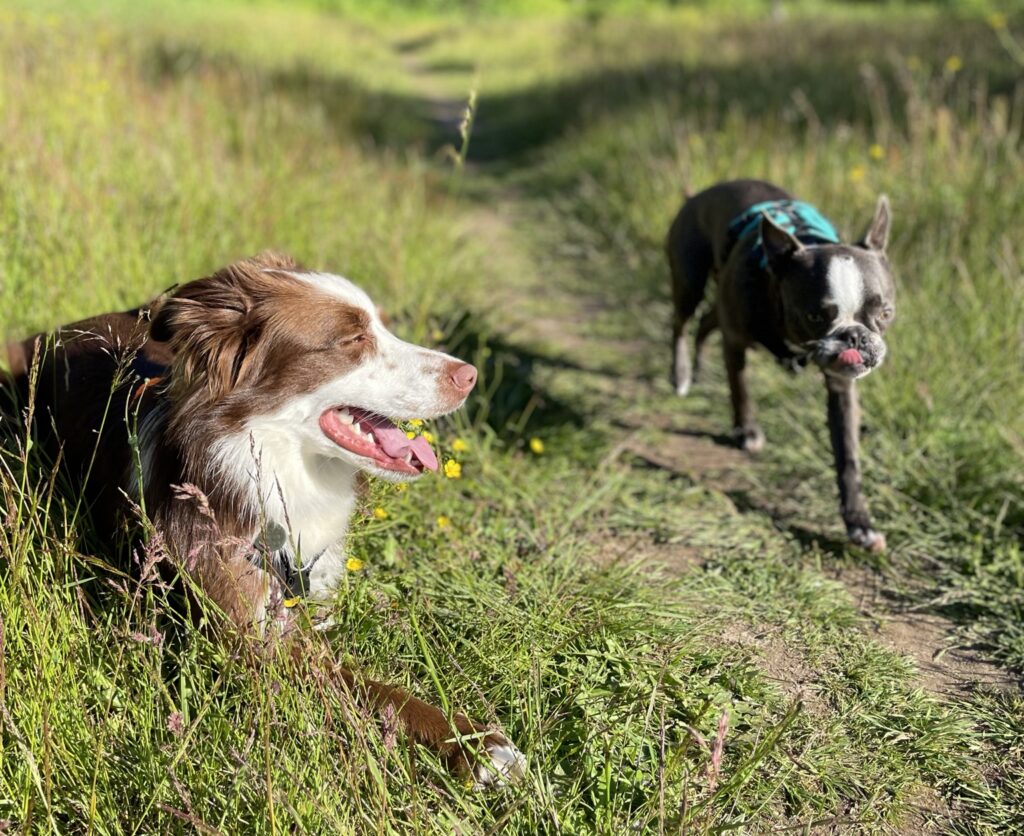Kind Corner: Is your dog in pain?

 The topic of pain is not talked about often enough, and yet, it is very important for dogs and their guardians.
The topic of pain is not talked about often enough, and yet, it is very important for dogs and their guardians.
Bianca Steinmetz of Bianca’s Dog Training writes about pain, some signs that can relate to pain and discomfort and gives tips to be better prepared for a vet visit.
Let’s get reading!
What is pain?
We know that dogs experience and suffer from pain just like humans do, and like us, our dogs don’t perform at their best when they are not feeling well.
The difference is that when your dog isn’t feeling well, they can’t just tell you what is wrong. You must try to understand what their body language and behaviour are telling you so that if you suspect your dog is in pain, you can seek veterinary advice.

The International Association for Study of Pain defines pain as:
“An unpleasant sensory and emotional experience associated with or resembling that associated with actual or potential tissue damage. Pain is always a personal experience that is influenced to varying degrees by biological, psychological, and social factors.”
The complexity of all these factors can make spotting a dog’s pain and discomfort challenging. We tend to think of dogs being uncomfortable and in pain when we “see it,” such as obvious signs like yelping or limping, but dogs express their pain in many ways.
For example, dogs can change their behaviour and start avoiding activities that caused them pain before. And yet, playing fetch may be so highly rewarding and fun that the dopamine released during the game makes them forget about the pain. One way to look at this phenomenon is to look at us: We usually are good at “keeping it together” at work, but once we are home, our headache becomes unbearable, and we are grumpy, frustrated, and on edge.
How do dogs express pain?
You instinctively know that your dog is in pain or discomfort when you:
- see an open wound
- see the strain in their body when walking with a limp
- hear the sound they make when they yelp
A wound, limping, and yelping are all signs of severe or acute pain. You know you need to see a veterinarian to provide your pet the care they need. But you can also learn to look for the more subtle cues your dog shows about their pain and discomfort before it gets to that level.
Some signs that can relate to pain and discomfort if your dog:
- is suddenly a little hesitant to jump in and out of the car when previously they did this eagerly and happily
- is waking up in the middle of the night barking or wanting to go outside
- used to love being around kids and dogs, is starting to avoid busy areas, hiding behind the chair, going to the other side of the room or growling at the kids when they run past
- not “wanting” to sit but happily laying down or vice versa
- is no longer greeting you all excited at the door anymore
- doesn’t let you groom them anymore, and you notice changes in their coat
- is becoming easily startled by unexpected noises
- only needs some nails trimmed, not others (uneven wear on the nails)
- sits only when backing up to a wall; otherwise, they slide down to their belly, and they don’t sleep on their back anymore
- stops mid-run and refuses to go any further unless you turn around and go back, then they run to the car
When clients tell me these things about their dog’s behaviour, it makes me curious about whether their dog is experiencing pain. At times like these is when we need to be more curious with our pups and engage them with empathy and caring, as well as book a visit to the veterinarian.

Preparing to ask the vet if your dog is in pain
When you bring your dog to see their veterinarian, they are a mixed bag of emotions: excited, nervous, stressed, and happy. These and other aspects have an impact on how the dog moves.
You may expect the vet to diagnose and find the remedy within a 10-15 minute appointment. You can help by arriving prepared with information about your pup and what you have been seeing.
Start at home by video recording your dog when they are relaxed and happy. They will move differently than at the vet’s office, and those videos may be helpful for your vet.
In addition, start a journal to track behavioural changes you notice, like reduced appetite, sleeping more or less than previously, being more reactive/aggressive, having become noise sensitive or no longer wanting to cuddle, etc. If you use a dog trainer, walker or daycare, ask them if they have noticed any changes in your dog and make a note of it. These small changes can help your vet identify pain early before something bigger comes up.
To find out what is causing the pain is a journey for you, your pup and your veterinary team. Ask your veterinarian about what treatment options might work for your dog.
Sharing what you see and notice in your dog’s behaviour and body language will help your dog to have a voice and get the extra care they need.